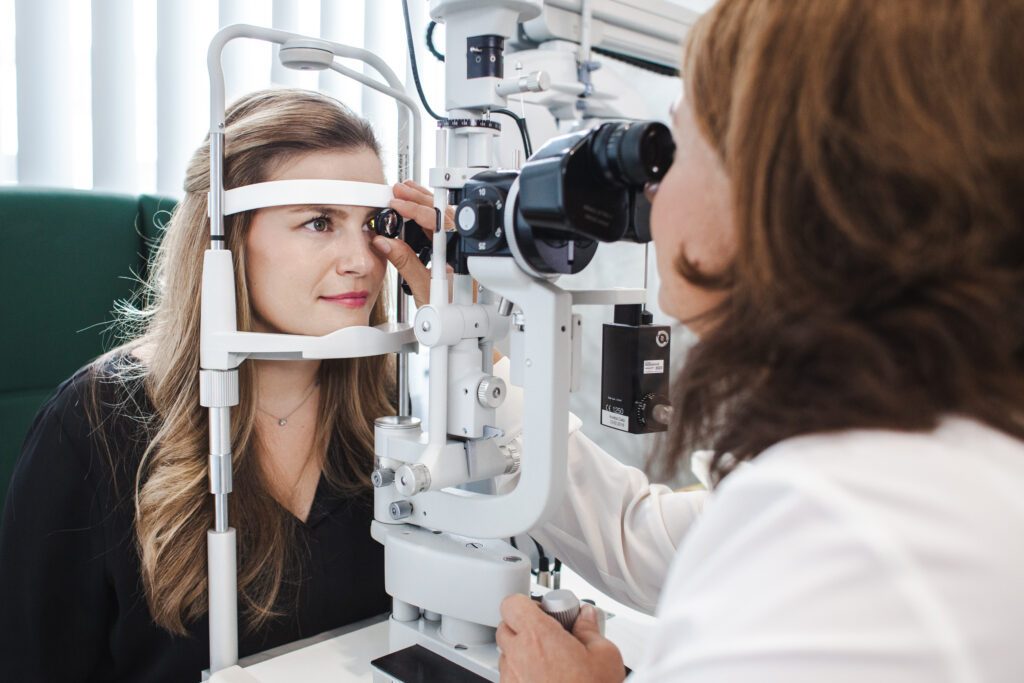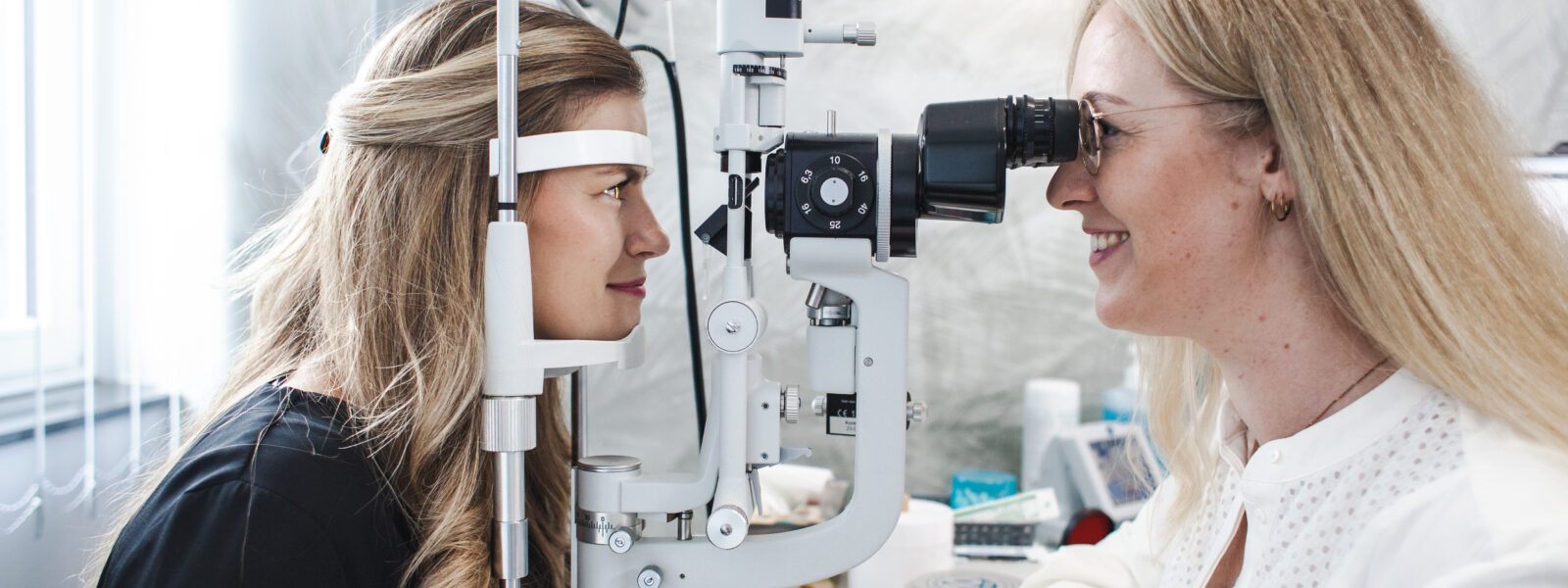Slit lamp examination
A slit lamp allows microscopic examination of the cornea, conjunctiva and lens of the eye. With the use of additional magnifying glasses, we can use it to look at deeper components of the eye and detect any diseases there. The slit lamp got its name from the narrow, slit-shaped beam of light it produces. It and the slit lamp examination are part of the basic equipment of every ophthalmologist’s office, can be used in many different ways and, of course, is usually the first diagnostic device used at BeyondEye to clarify your eye complaints.
What is the procedure for a slit lamp examination?
The examination at the slit lamp is completely painless. There is a support option for your head so that your eyes can be examined in the most restful position possible. Then the ophthalmologist can examine the eye with the slit lamp under high magnification. We can also carry out the measurement of intraocular pressure here. With an additional laser light source, even minor surgical procedures are possible and, if required, a built-in camera records the examination.

The many uses of the slit lamp
Thanks to its versatility, the slit lamp microscope is the most important diagnostic tool in our BeyondEye ophthalmology practice. Slit-lamp examinations reveal corneal lesions or lens opacities, for example. The aqueous humor can also be checked. With further integrated devices, even additional eye diagnostics is possible. For example, the applanation tonometer can be used to determine intraocular pressure. An additional contact lens can also be used to examine the retina and detect possible retinal damage.
Before examining the back of the eye with the slit lamp, the eye is ideally treated with pupil dilating and lightly anesthetizing drops. This makes this examination completely painless and usually without complications. For the slit lamp examination, sit in front of the slit lamp and rest your chin on a fixture provided for this purpose.
You can easily make an appointment for an examination online here or you can call us.

